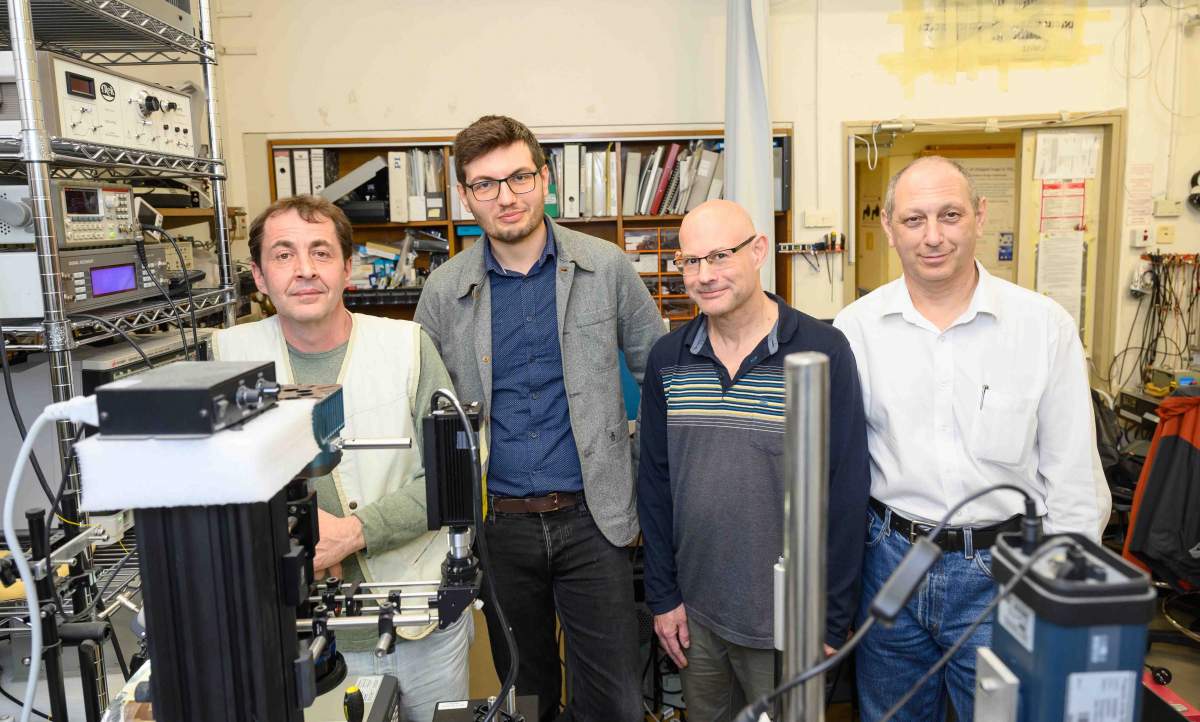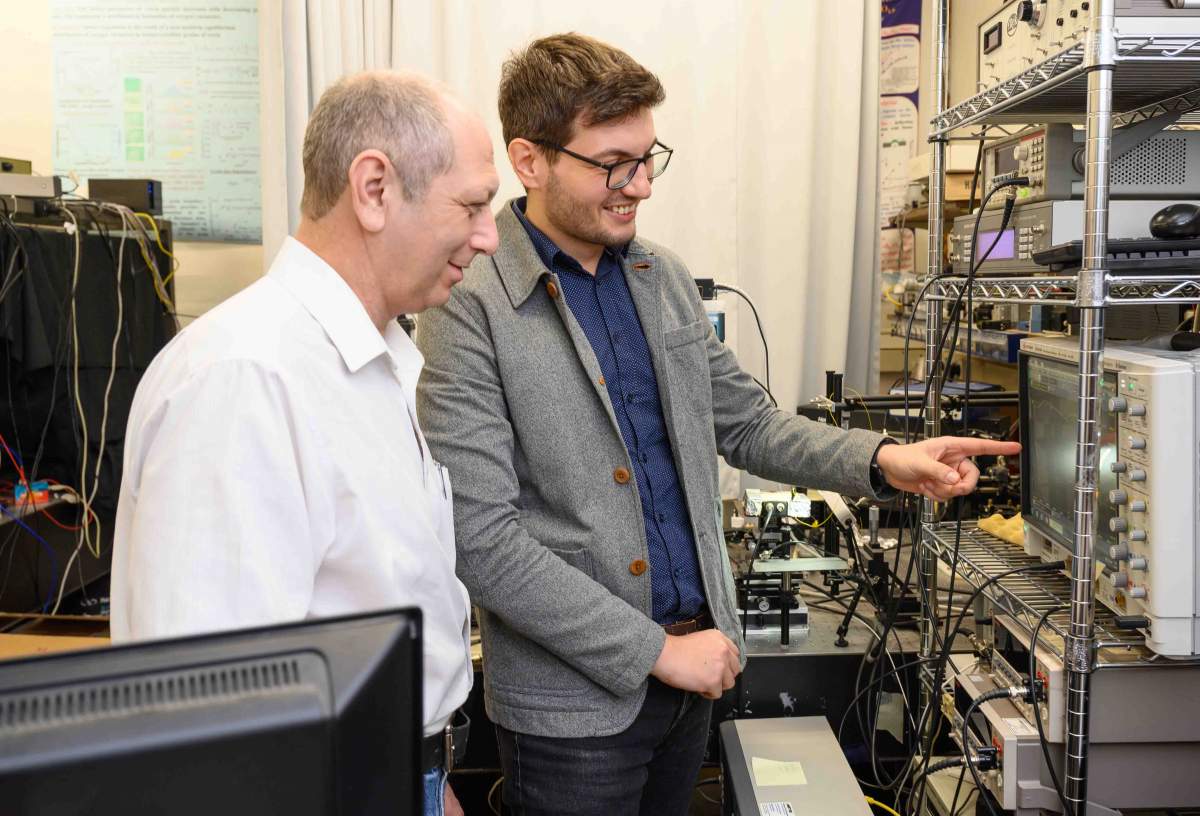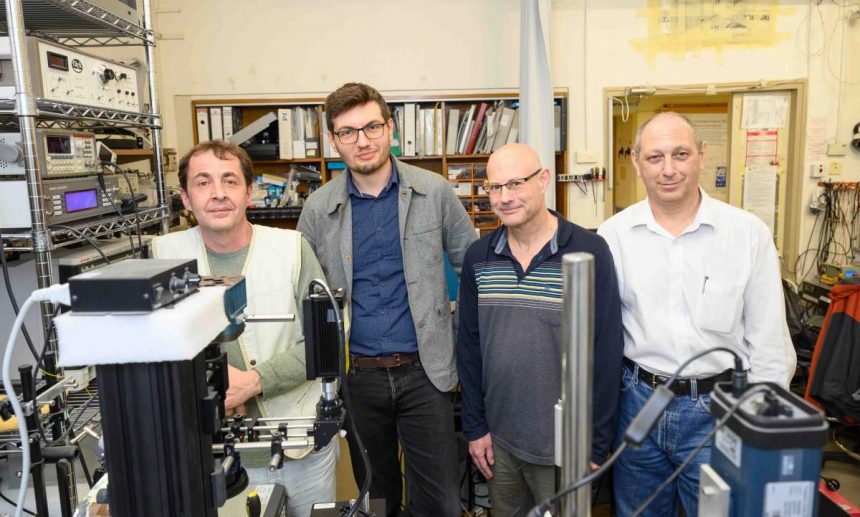 (L to R) Sergey Khodorov, Maxim Varenik, Dr. David Ehre and Prof. Igor Lubomirsky
(L to R) Sergey Khodorov, Maxim Varenik, Dr. David Ehre and Prof. Igor Lubomirsky
Piezoelectric materials have the ability to convert energy from various sources like walking or driving into usable energy. However, most piezoelectric materials contain lead, posing environmental risks. In a breakthrough discovery, a new lead-free piezoelectric ceramic developed at the Weizmann Institute of Science by Prof. Igor Lubomirsky’s team shows the same performance as lead-containing materials.
The key feature of this new ceramic is its ability to deform under an electric field, a property commonly used in devices for precise movements. The material consists of cerium oxide and zirconium oxide, offering a nontoxic and environmentally friendly alternative to traditional lead-containing piezoelectric materials. This ceramic has potential applications in various industries due to its lower dielectric constant, meaning it requires less energy to function.
The research team’s journey towards this discovery started over a decade ago. Through experimentation with different impurities, particularly trivalent impurities and zirconium, they were able to enhance the electrostriction properties of cerium oxide, leading to a material with significant engineering potential. The unexpected results have sparked further collaboration and research to fully understand the unique properties of this new ceramic.
Investing in innovative ideas like this lead-free piezoelectric ceramic could have a significant impact on the future of sustainable energy technology.

About three years ago, Maxim Varenik, a PhD student in Lubomirsky’s lab, performed an experiment that produced startling results. He introduced trivalent impurities – atoms with a chemical valence of three, that is, having three electrons in their outer orbit – into cerium. When he applied voltage to the resultant substances, he noticed an interesting, regular phenomenon: The smaller the inserted atoms were in size, the greater the electrostriction. Because the increases in electrostriction had occurred along such a neat, straight line, he was curious to continue experimenting with ever smaller atoms. However, he ultimately ran out of trivalent impurities; none of the smaller ones he had already tried could be dissolved in cerium oxide.

“For about ten years we’d studied something considered utterly useless – we did it for the sake of scientific curiosity,” Lubomirsky says. “Now we’ve suddenly obtained a material with potential engineering applications. The strains and stresses produced within it by voltage are on a par with those observed in the best commercial materials.”






